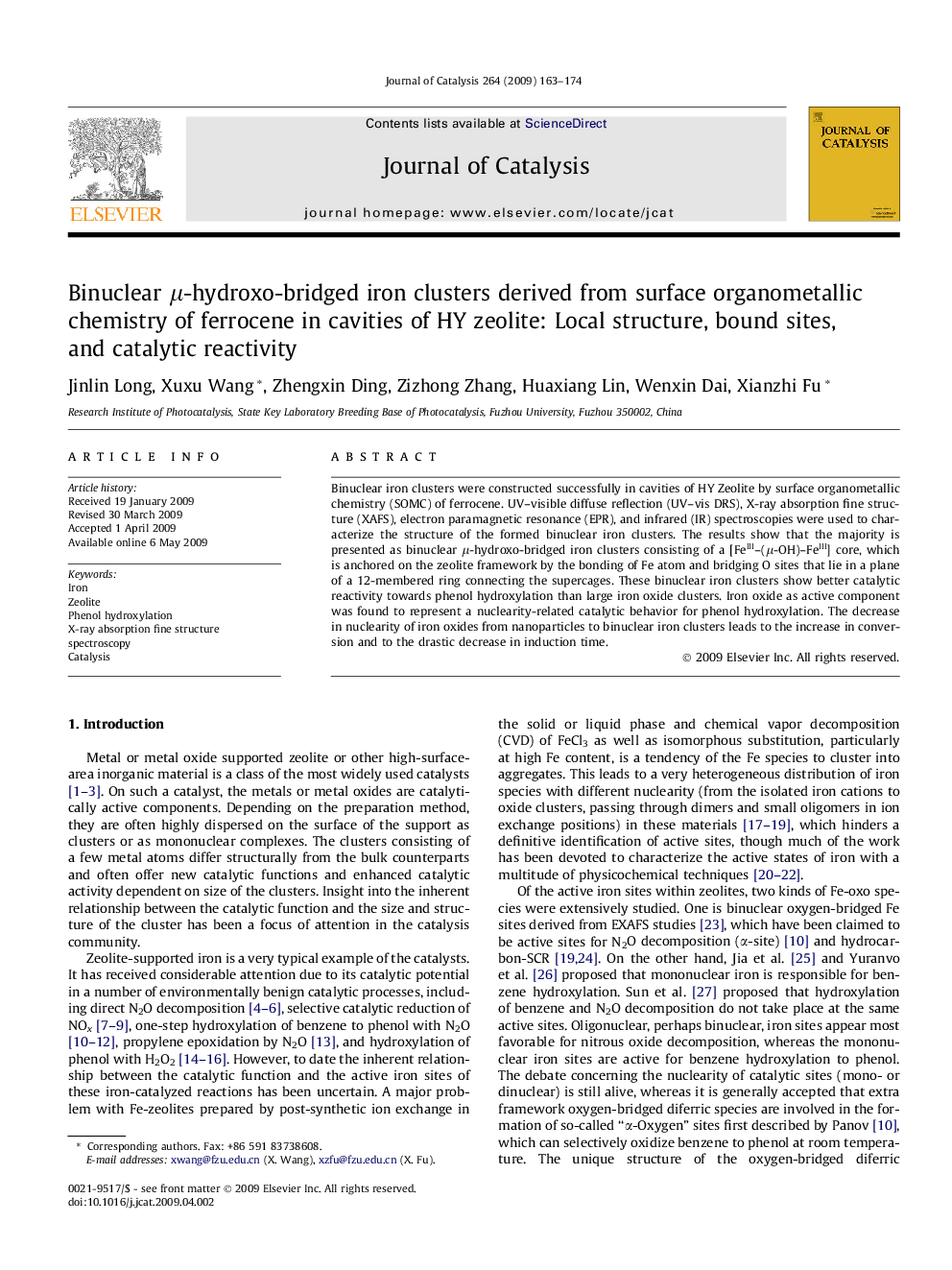| Article ID | Journal | Published Year | Pages | File Type |
|---|---|---|---|---|
| 62211 | Journal of Catalysis | 2009 | 12 Pages |
Binuclear iron clusters were constructed successfully in cavities of HY Zeolite by surface organometallic chemistry (SOMC) of ferrocene. UV–visible diffuse reflection (UV–vis DRS), X-ray absorption fine structure (XAFS), electron paramagnetic resonance (EPR), and infrared (IR) spectroscopies were used to characterize the structure of the formed binuclear iron clusters. The results show that the majority is presented as binuclear μ-hydroxo-bridged iron clusters consisting of a [FeIII–(μ-OH)–FeIII] core, which is anchored on the zeolite framework by the bonding of Fe atom and bridging O sites that lie in a plane of a 12-membered ring connecting the supercages. These binuclear iron clusters show better catalytic reactivity towards phenol hydroxylation than large iron oxide clusters. Iron oxide as active component was found to represent a nuclearity-related catalytic behavior for phenol hydroxylation. The decrease in nuclearity of iron oxides from nanoparticles to binuclear iron clusters leads to the increase in conversion and to the drastic decrease in induction time.
Graphical abstractBinuclear μ-hydroxo-bridged iron clusters consisting of a [FeIII–(μ-OH)–FeIII] core anchored on the framework-bridged oxygen sites in cavities of HY zeolite show enhanced activity towards phenol hydroxylation.Figure optionsDownload full-size imageDownload high-quality image (80 K)Download as PowerPoint slide
